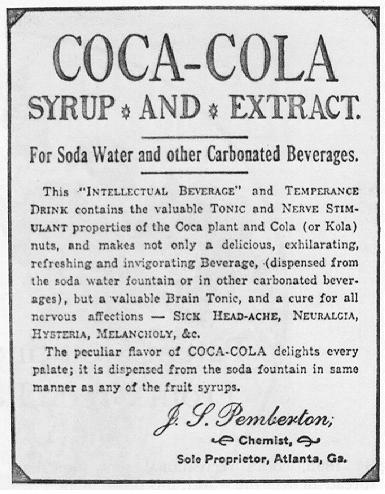Blog Archive
More Harm Than Good
Spring is finally upon us! Soon New York will be blessed with warm evenings and blooming flowers, and the delightful side effects of itchy bug bites and raging allergies…
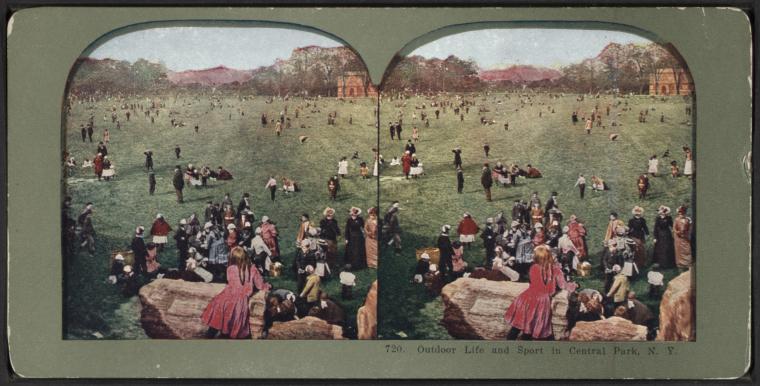
New Yorkers taking in the pollen and the sunshine in Central Park, circa 1870. Image courtesy the New York Public Library.
These days we can just pop into the drugstore for various medicines that’ll cure what ails you, but to the former residents of Orchard Street, relief from the itches, sniffles, aches and pains as well as more serious diseases that were common in the cramped quarters could be hard to come by.
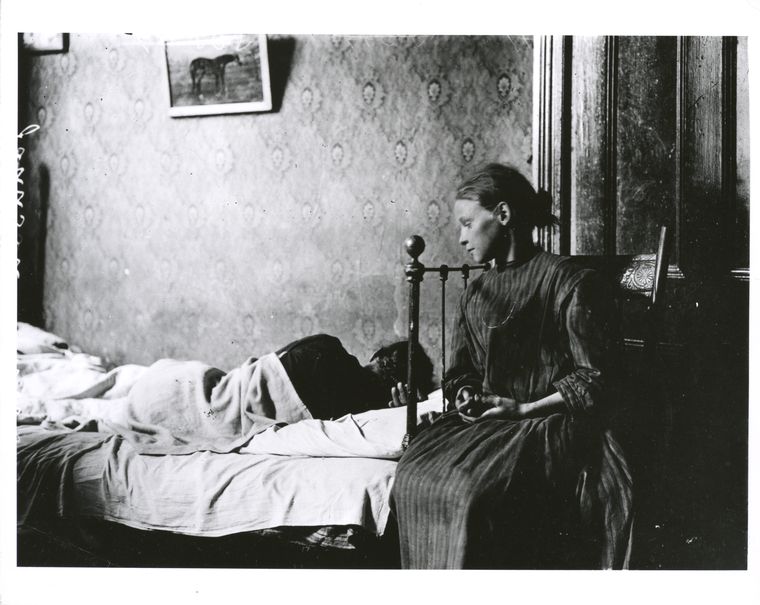
"A Girl and Her Sick Father, New York Tenement" by Lewis Hine. Photo courtesy the New York Public Library.
Not all remedies available to tenement residents were helpful; so-called ‘patent medicines’ could be poisons that were advertised as healthy supplements or cures and often made people sicker or even killed them. These false medicines prayed on the poor, for they were cheap and could be purchased without seeing a doctor. Even the term “patent” is misleading, as most of these supposed cures were not patented, though some were trademarked. Patenting an elixir would require the maker to make public the ingredients of their ‘medicine,’ which is something that the maker very much did not want to do.
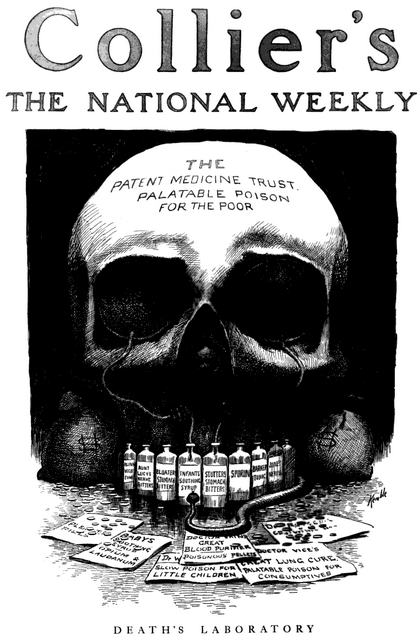
The cover of a 1905 issue of Collier's Weekly, exposing the patent medicine trade as a sham. Image courtesy the Library of Congress.
Patent medicines were advertised as having exotic or natural and wholesome ingredients, like snake oil, swamp root, vegetables and herbs – some even claimed to have electricity or radium in them (some actually did have radioactive ingredients and were extremely deadly). They purported to cure a range of ailments from venereal disease to hangovers, depression, cancer, paralysis, and “female complaints.” Some claimed to have restorative effects on blood, liver and stomach.
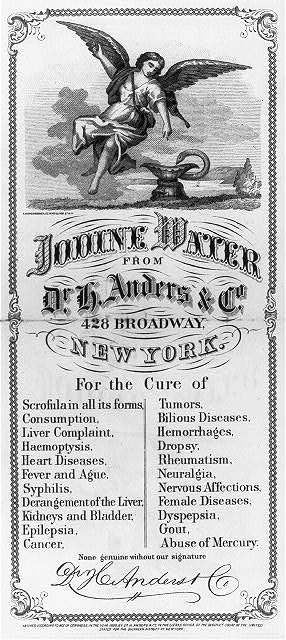
This iodine water claims to cure everything from cancer to syphilis to "derangement of the liver." Image courtesy the Library of Congress
The ingredients actually hiding behind the flashy label were often poisons like turpentine, laxatives, or even controlled substances like alcohol, opium, cannabis, and cocaine.
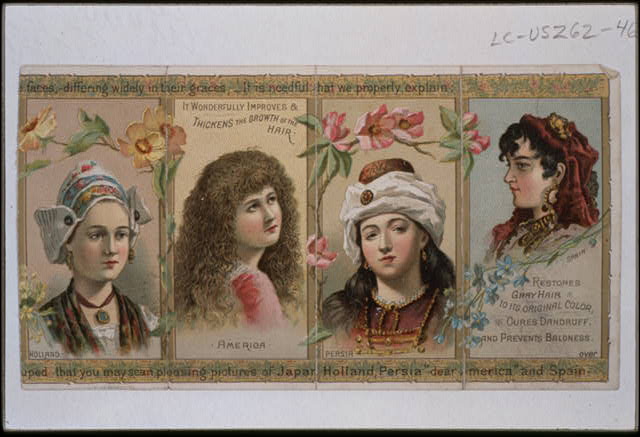
1800's label of a hair tonic patent medicine with "busts of typical women of Holland, America, Persia, and Spain." The images of exotic women could make American women want to purchase the tonic. Image courtesy the Library of Congress.
Due to these drugs, patent medicines that claimed to calm sick babies did so, because the crying children would become laconic from the opiates, and therefore the parents would continue to purchase and administer the drugs. 97 Orchard’s Bridget Moore probably gave her baby Agnes, who was suffering from marasmus due to tainted milk, opium laced patent medicines, thinking that the medicine could cure the baby, even though it was only killing her faster.
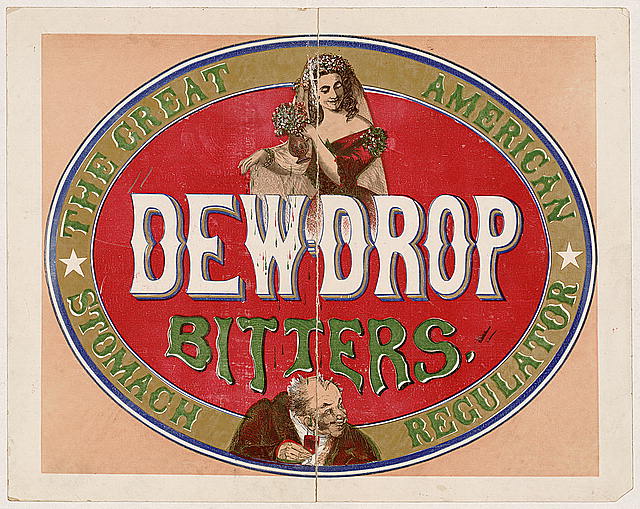
Label for Dewdrop Stomach Regulator, about 1868. Dewdrop was most likely simply alcoholic bitters. Image courtesy the Library of Congress.
The 1906 Pure Food and Drug Act stated that ingredients must be clearly labeled on patent medicines and drastically reduced the most fraudulent patent medicines, but it wasn’t until the 1930’s and 40’s that most patent medicines either were driven out business or re-branded and no longer claimed to have medical purposes. Some recognizable items began as patent medicines, including Angostura bitters, 7-Up, tonic water and Coca-Cola, which supposedly would cure morphine addiction and impotence.
Of course, some medicines from the era were truly beneficial and are still sold today, such as Bayer aspirin, Goody’s power, Anacin and Vick’s VapoRub. Maybe some of those could help you out with those bug bites and allergies.
– Posted by Lib Tietjen
